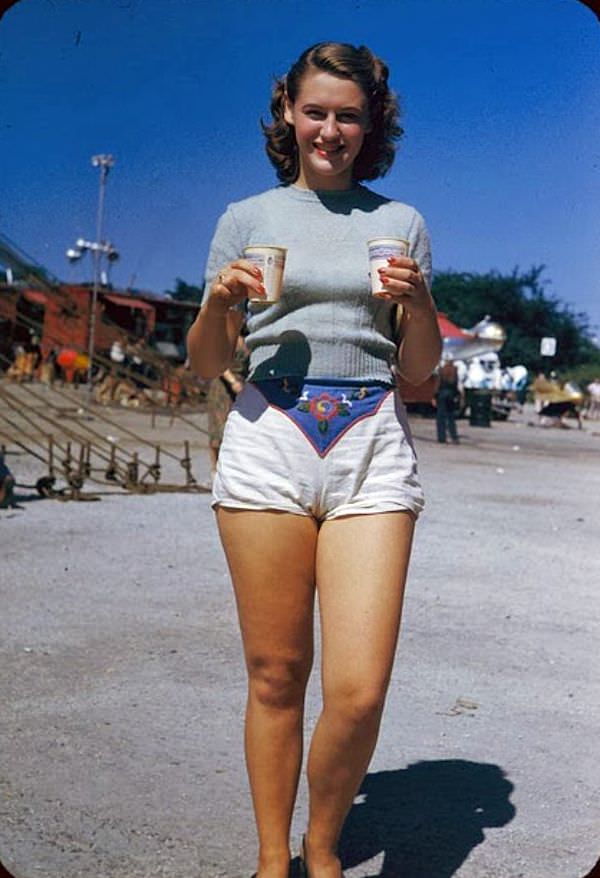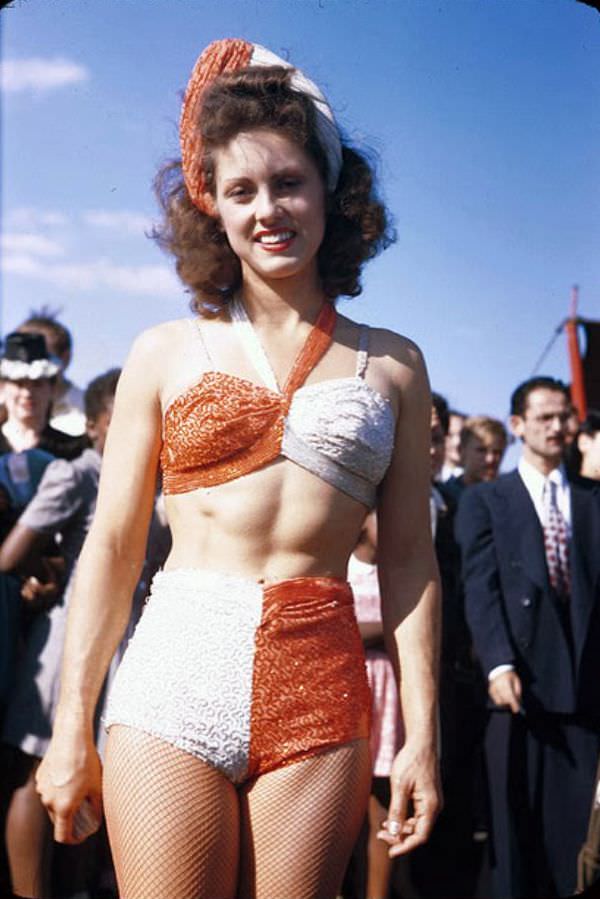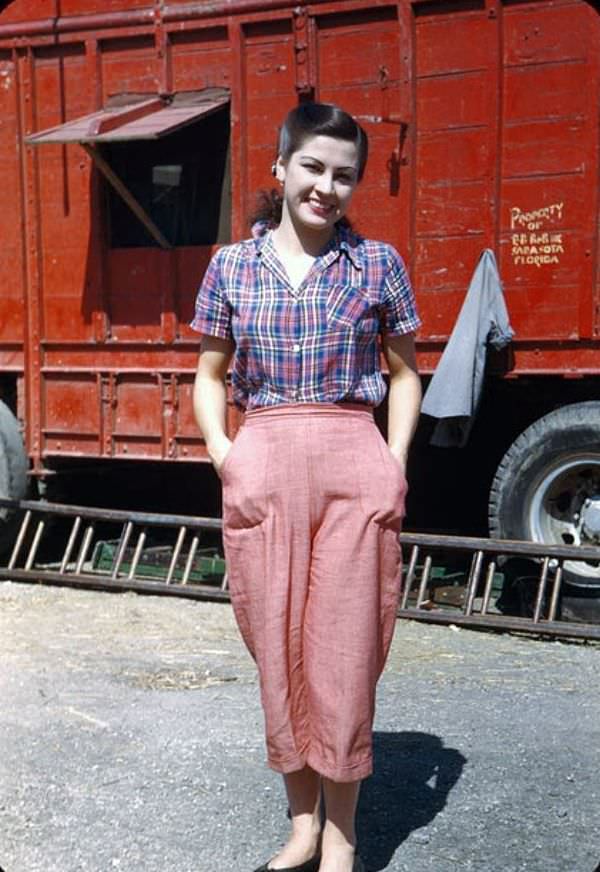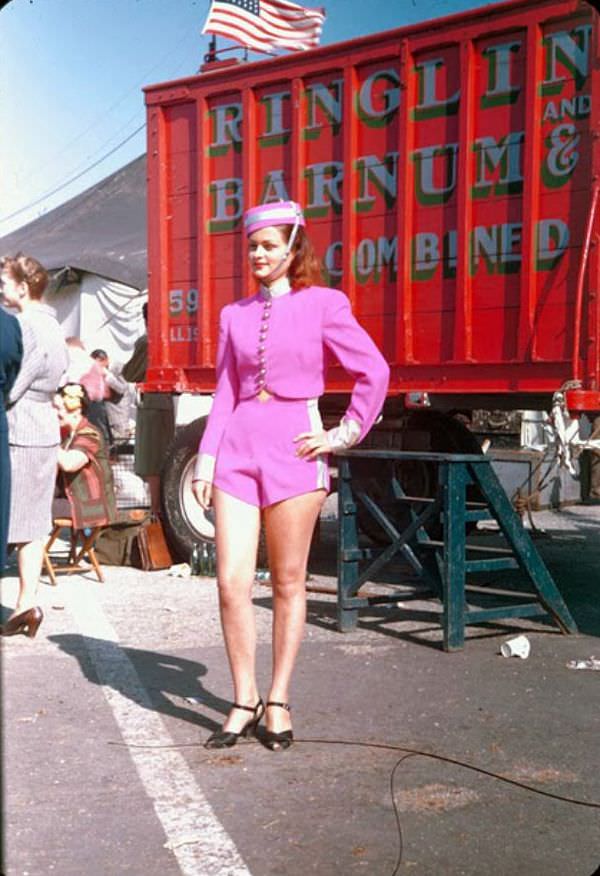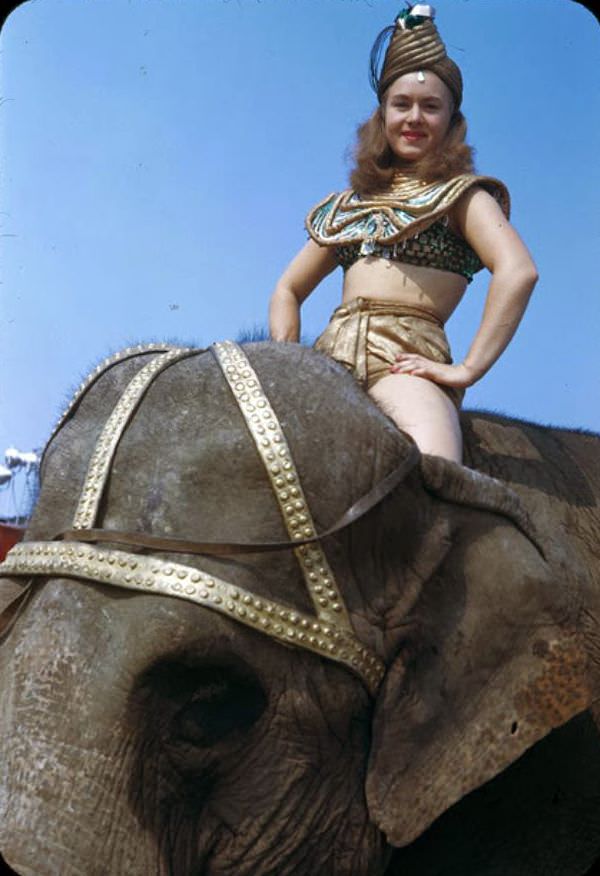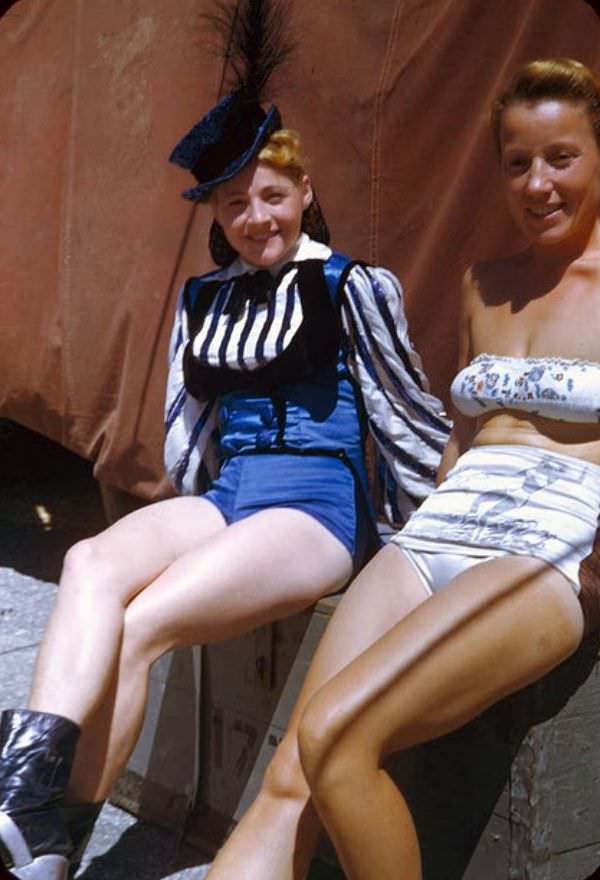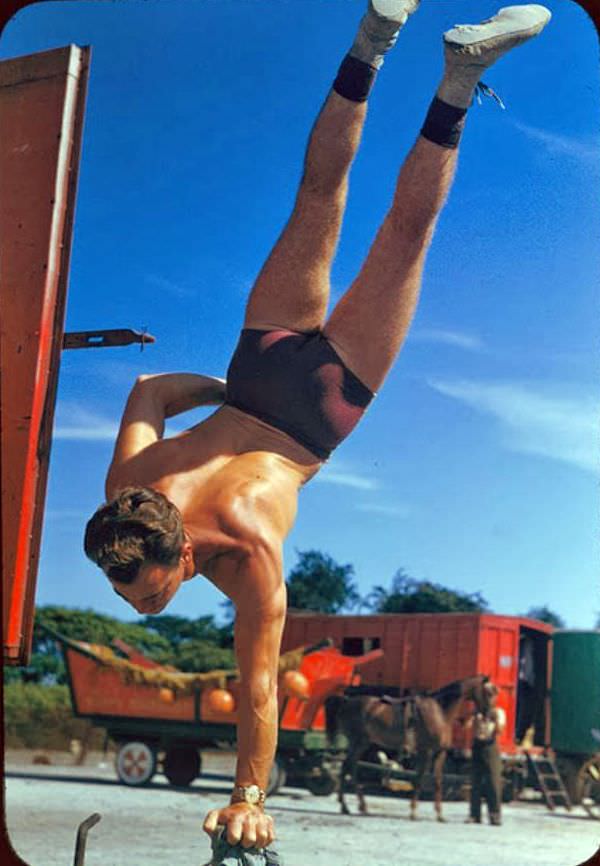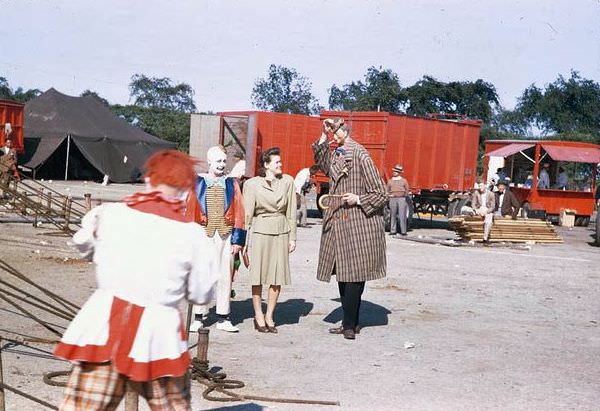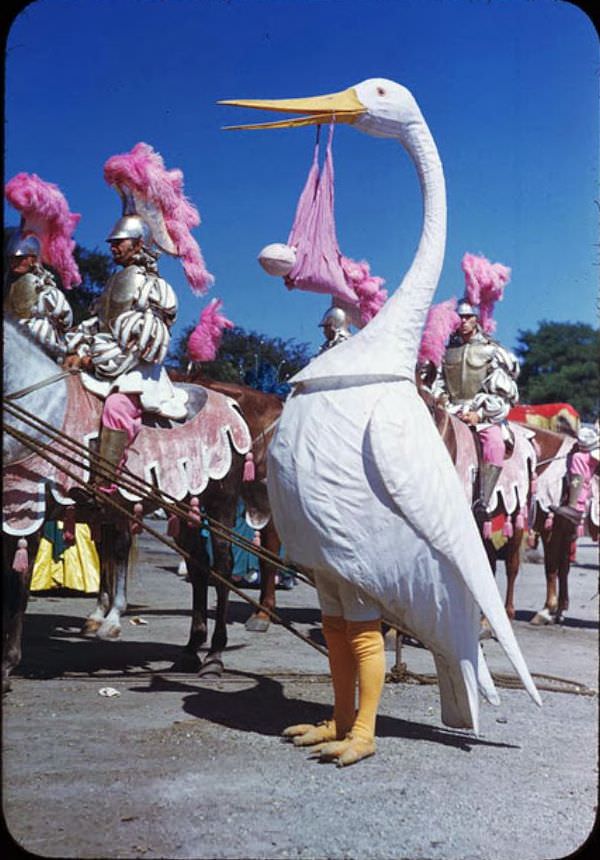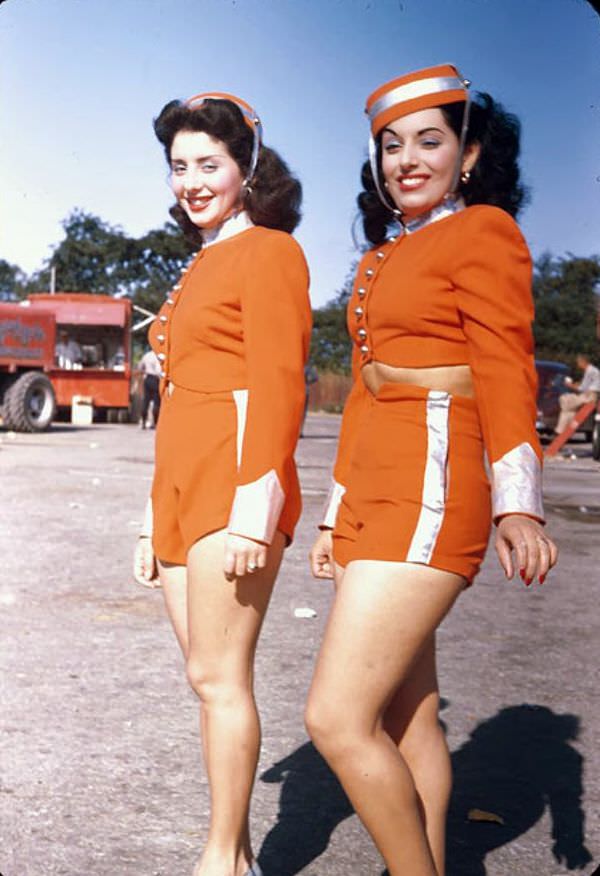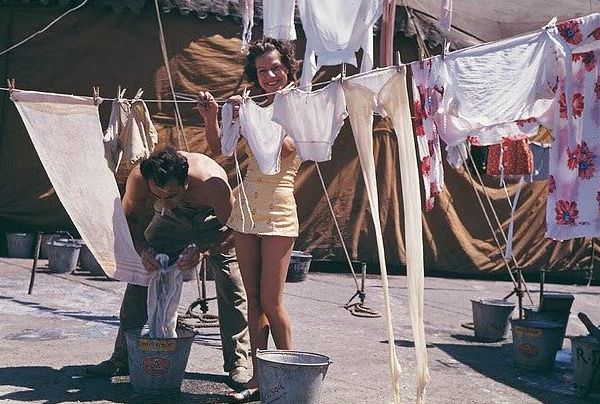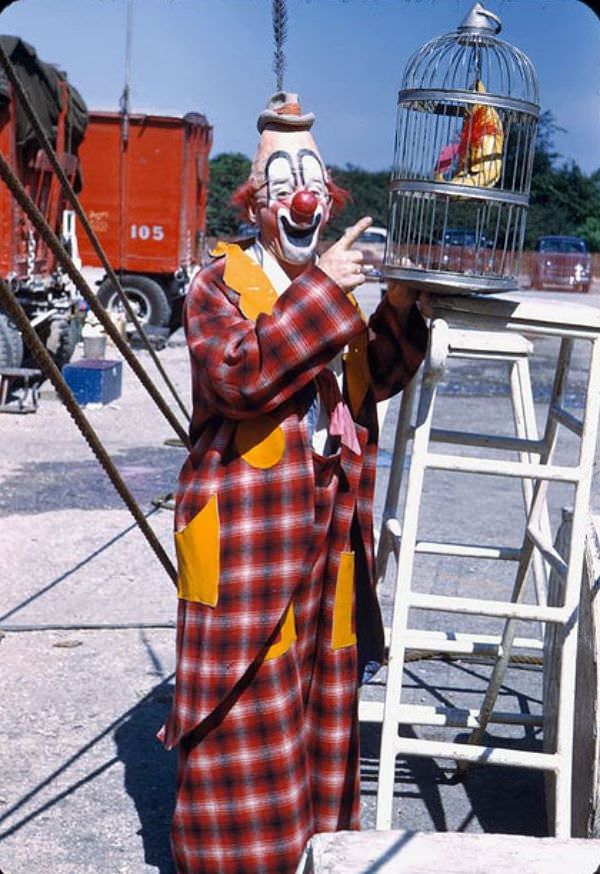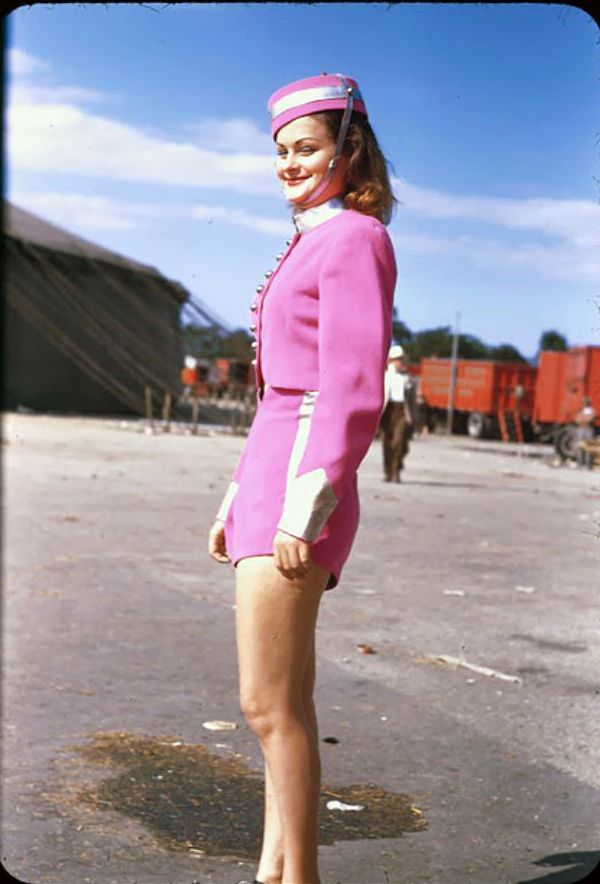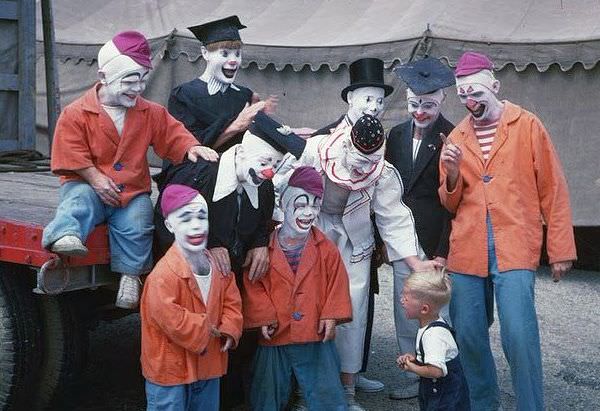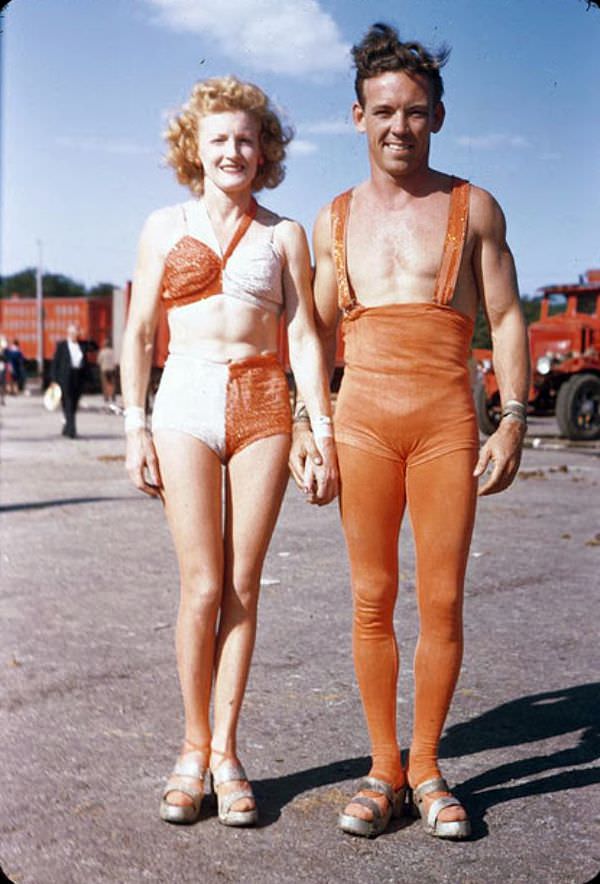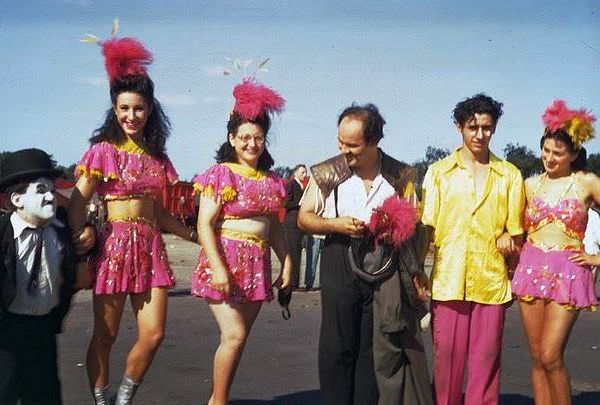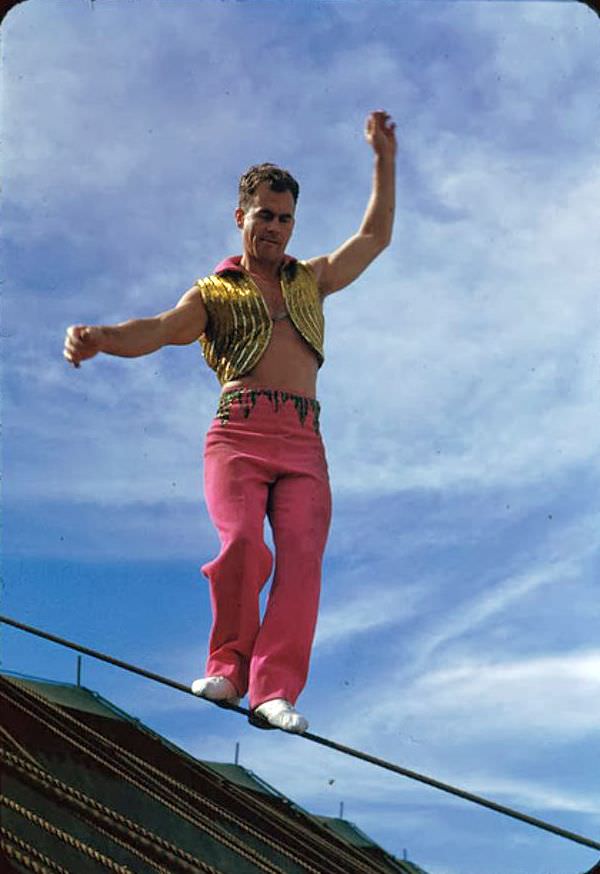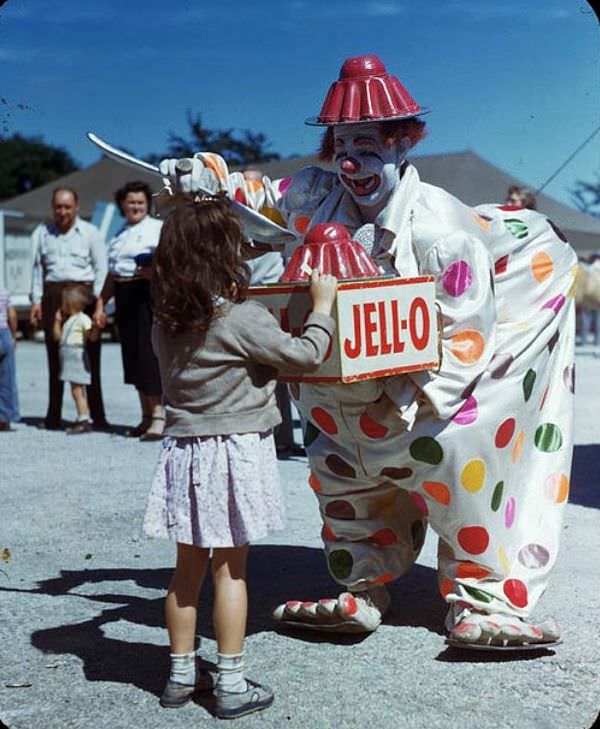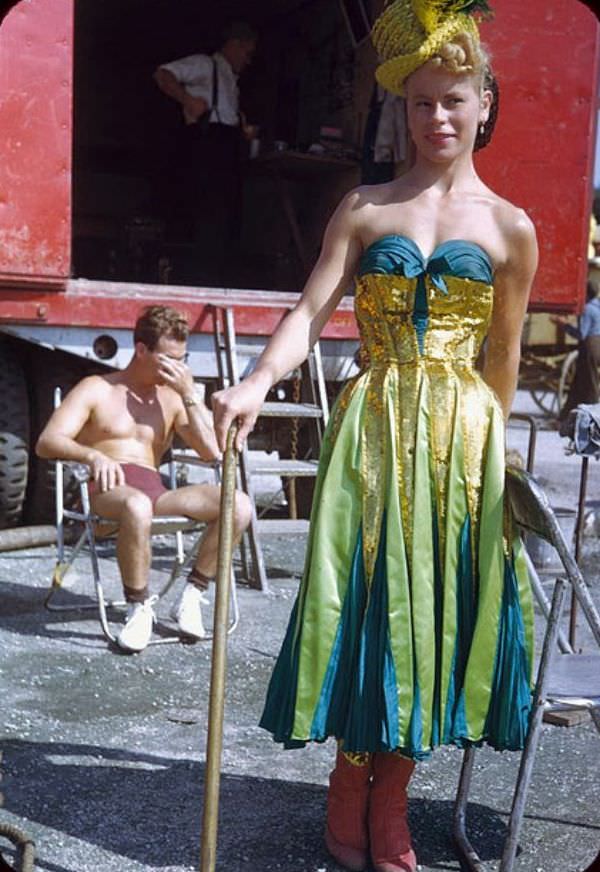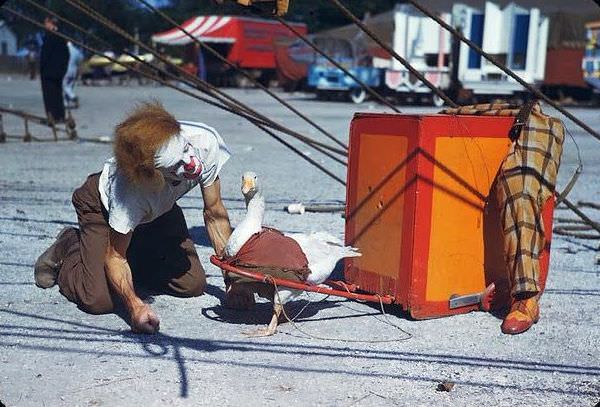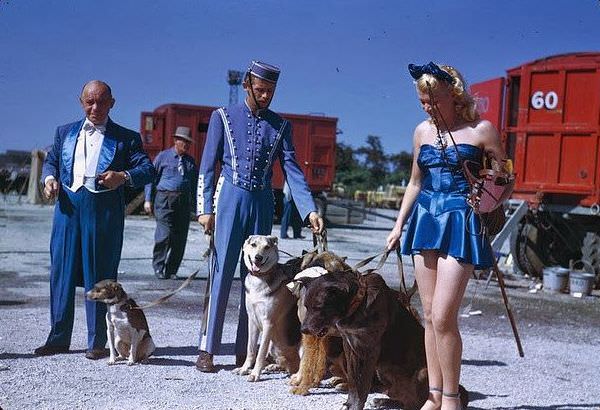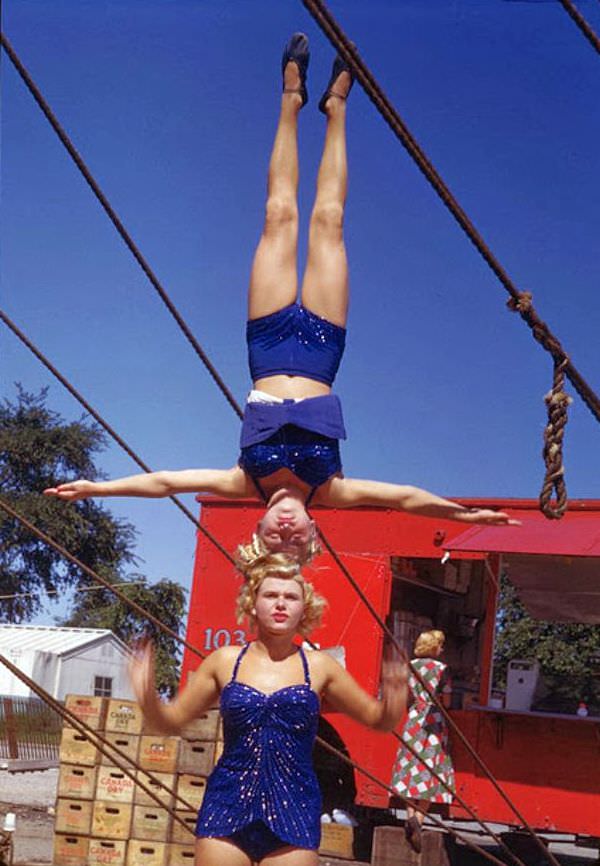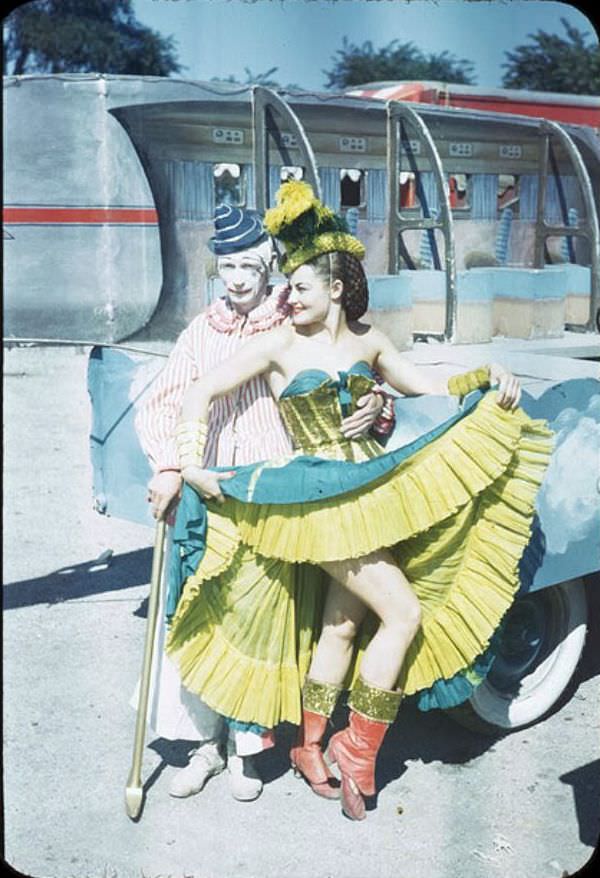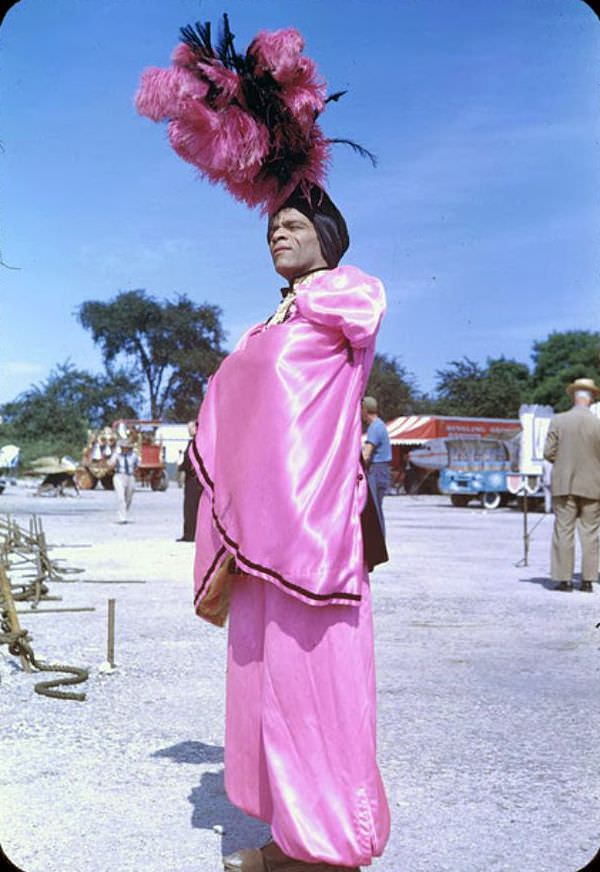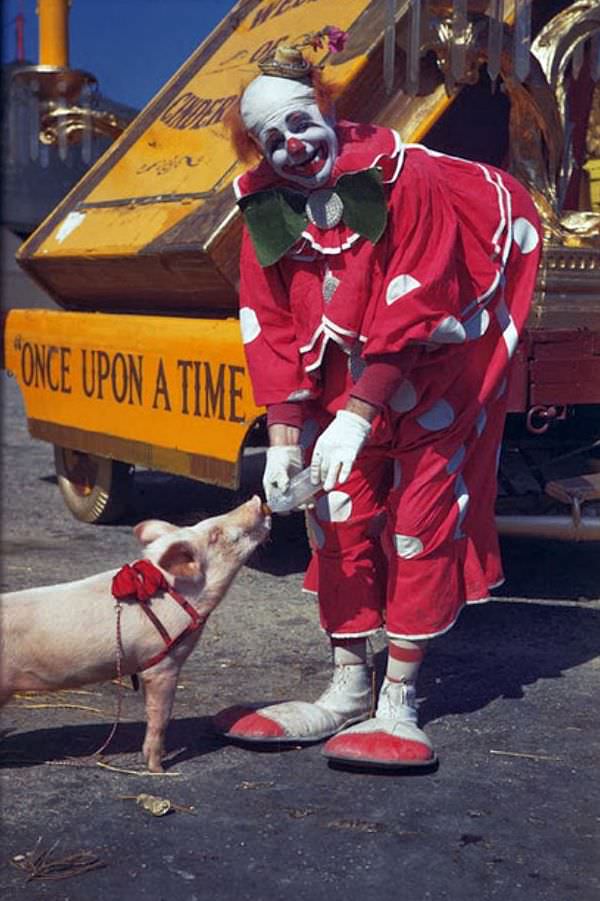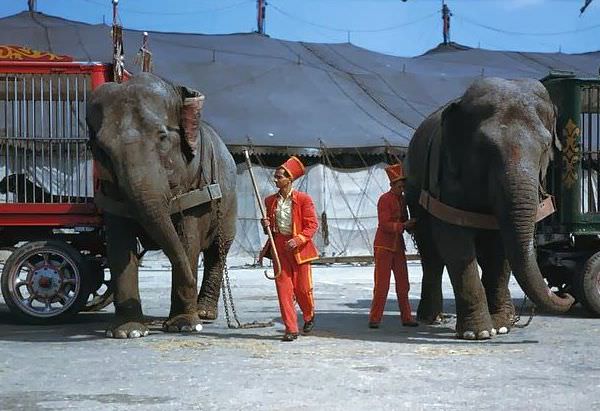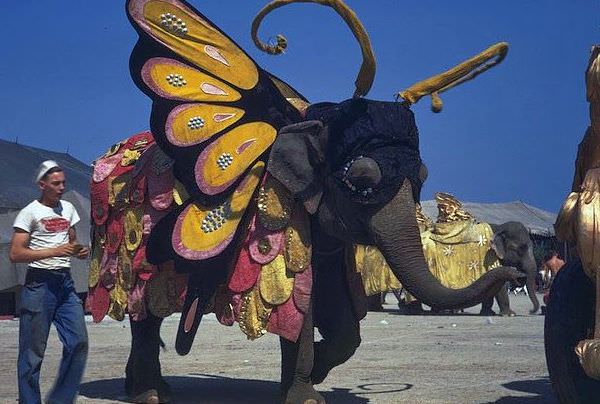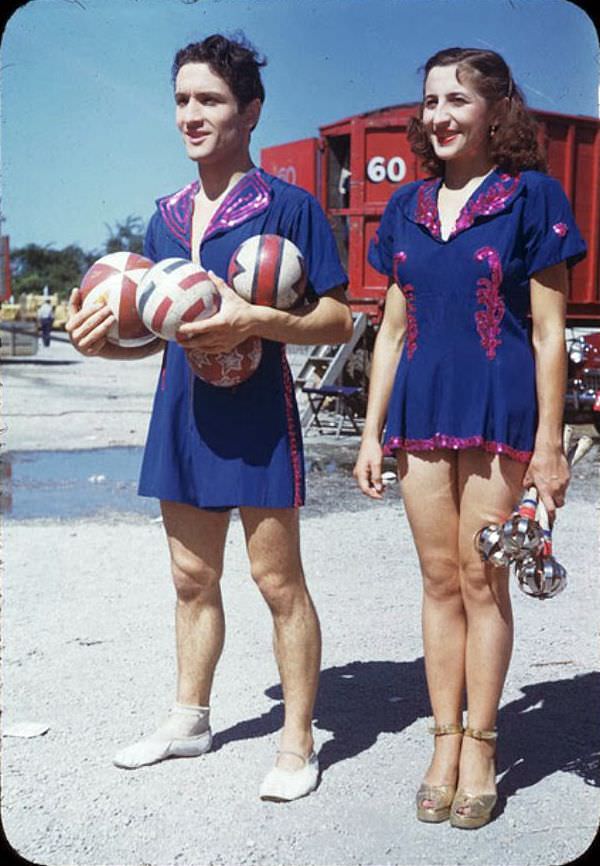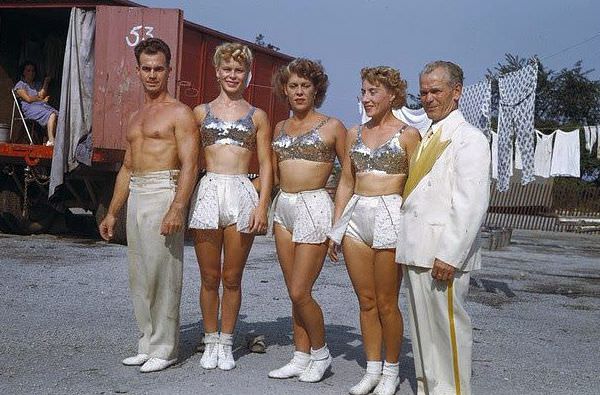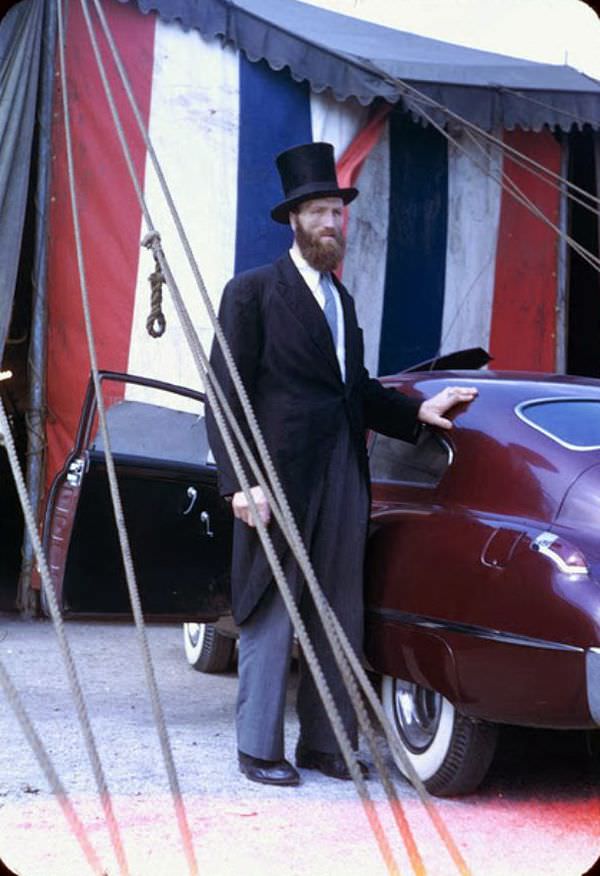In the 1940s, the arrival of the Ringling Bros. and Barnum & Bailey Circus in Chicago was a major event, transforming venues like the Chicago Stadium into a world of spectacle. For the performers of “The Greatest Show on Earth,” life was a demanding cycle of travel, rehearsal, and performance, a reality captured in the color Kodachrome slides of amateur photographer Charles Cushman.
The Circus Train Arrives
The circus traveled by rail, living and moving in its own dedicated train. This rolling city consisted of hundreds of specialized cars, including sleeping quarters for the performers and staff, dining cars, and stock cars for the numerous animals. Upon arrival in Chicago, the process of “setting up” was a performance in itself. Elephants were often used to provide the heavy labor, hauling equipment and helping to prepare the arena for the show.
For the performers, Chicago was one of many stops on a national tour that kept them on the road for most of the year. Their living quarters on the train were compact and functional. The social structure of the circus was hierarchical, with star performers having more spacious accommodations than the chorus girls or roustabouts. This close-knit, traveling community had its own rules and traditions, creating a self-contained world that moved from city to city.
Read more
A World of Performance
Inside the arena, the show was a carefully orchestrated production featuring a wide array of acts. The aerialists were among the star attractions. Performers like the Flying Wallendas executed daring high-wire acts without a net, while trapeze artists swung high above the three rings. These acts required immense strength, precision, and trust between partners, honed through countless hours of practice.
Clowns were essential to the circus experience, providing comic relief between the more dangerous acts. Performers like the famous Lou Jacobs developed unique personas and gags. Clowns were not just jesters; they were skilled acrobats, musicians, and pantomime artists. Their elaborate makeup and custom-made costumes, often featuring oversized shoes and brightly colored wigs, were a key part of their identity.
The show also featured a large troupe of showgirls, known as “gorgeous aerialistas.” These women performed in elaborate, synchronized production numbers. Their costumes were ornate, often adorned with sequins, feathers, and headdresses, designed to catch the bright lights of the arena. While some performed basic aerial maneuvers on low-hanging apparatuses, their primary role was to contribute to the grand spectacle of the performance.
The Animal Acts
Animals were a central part of the Ringling Bros. and Barnum & Bailey show in the 1940s. Equestrian acts showcased riders performing stunts on the backs of disciplined horses that galloped in formation around the rings. Trainers like the famed animal behaviorist Alfred Court worked with a variety of big cats, including tigers and lions, presenting them in a large, circular steel cage assembled in the center ring.


